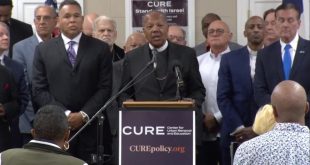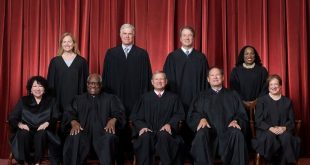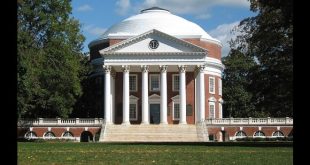While I am painfully aware of the social and economic ravages which have befallen my race and all who suffer discrimination, I hold out enduring hope that this country will live up to its principles so clearly enunciated in the Declaration of Independence and the Constitution of the United States: that all men are created equal, are equal citizens, and must be treated equally before the law. — Justice Clarence Thomas
Justice Clarence Thomas wrote these words in his U.S. Supreme Court concurring opinion (PDF – begins on page 49) in the consolidated case involving Students for Fair Admissions, Inc., against Harvard University and the University of North Carolina (UNC) at Chapel Hill over their race-based admissions policies.
The court ruled 6-3 on Thursday that these policies violate the Equal Protection Clause of the Fourteenth Amendment. Discriminating against individual applicants based on race (even for the sake of “diversity) is not permissible under the U.S. Constitution.
The ruling overturned Grutter v. Bollinger (2003), which held that colleges and universities could use race as a “plus” factor in admissions.
In agreeing in full with the majority decision, Justice Thomas issued a concurring opinion “to offer an originalist defense of the colorblind Constitution; to explain further the flaws of the Court’s Grutter jurisprudence; to clarify that all forms of discrimination based on race—including so-called affirmative action—are prohibited under the Constitution; and to emphasize the pernicious effects of all such discrimination.”
Justice Thomas said he repeatedly stated that Grutter was wrongly decided and violated the Fourteenth Amendment.
While acknowledging racist interpretations of the law in the past, Justice Thomas contended that the Fourteenth Amendment to the U.S. Constitution is clear: citizens of the United States, regardless of skin color, are equal before the law.
“Properly understood, our precedents have largely adhered to the Fourteenth Amendment’s demand for colorblind laws,” he wrote. “That is why, for example, courts ‘must subject all racial classifications to the strictest of scrutiny.’ … And, in case after case, we have employed strict scrutiny vigorously to reject various forms of racial discrimination as unconstitutional. … The Court today rightly upholds that tradition and acknowledges the consequences that have flowed from Grutter‘s contrary approach.”
One of Justice Thomas’s many arguments against racial preferences in admissions is that universities haven’t been able to establish an actual link between discriminating against applicants based on race and the so-called educational benefits of “diversity” that would satisfy the strict scrutiny standard.
“With nearly 50 years to develop their arguments, neither Harvard nor UNC—two of the foremost research institutions in the world—nor any of their amici can explain that critical link.”
If Harvard can’t even explain the link, he wrote, then its interest in racial diversity can’t be compelling enough to overcome the Constitution’s limits on “race consciousness…UNC fares no better,” Justice Thomas wrote.
Chattel slavery and its offspring are despicable parts of our history. On top of that was the Supreme Court’s “tragic failure” of misinterpreting “the Reconstruction Amendments.”
“We should not repeat this mistake merely because we think, as our predecessors thought, that the present arrangements are superior to the Constitution,” Justice Thomas wrote.
Photo credit: By Whoisjohngalt – Own work, CC BY-SA 4.0, link
Do you like this post? Sign up for more!
 CURE News and Clergy Blog News and Commentary for Christians
CURE News and Clergy Blog News and Commentary for Christians




Let’s hope that our Constitution (and civil laws therein) can remain “colorblind” for succeeding generations. And maybe–just maybe–that noble ideal will filter down to public interaction, acceptance and discourse as well between the races. It’s an uncomfortable subject not only for the nine justices, but for the public at large. Let’s trust that this ruling can help to provide a pathway toward a “more perfect union.”